
Fundamentals
Hair melanin, at its most fundamental, represents the natural pigment responsible for the vibrant spectrum of colors witnessed across human hair. Produced by specialized cells known as Melanocytes, residing within the hair follicles, this biological compound imbues each strand with its unique hue. Its presence dictates everything from the deepest obsidian to the lightest flaxen, influencing not merely appearance but also the very resilience of the hair itself.
Understanding hair melanin begins with recognizing its dual forms ❉ Eumelanin and Pheomelanin. Eumelanin, a dark brown to black pigment, imparts the rich, deep tones found in brown and black hair. Pheomelanin, a lighter pigment, introduces the warmer, reddish, and yellow tones present in red and blonde hair.
The specific combination and concentration of these two melanin types within the hair shaft determine the precise color of an individual’s hair. This intricate interplay, a dance of inherited biological instruction, crafts the vast diversity observed across global populations.
Beyond its visual role, melanin provides a layer of protection for the hair. It absorbs ultraviolet (UV) radiation from the sun, shielding the hair proteins from potential damage. This inherent defense mechanism highlights a deeper significance, particularly for hair types that evolved in environments with intense sun exposure.

The Hair Follicle’s Inner World
Within the bustling environment of the hair follicle, a tiny factory of creation exists. Melanocytes, situated at the base of this structure, diligently synthesize melanin. These pigments are then packaged into small, membrane-bound organelles called Melanosomes. Melanosomes are then transferred to the keratinocytes, the primary cells that make up the hair shaft.
As these keratinocytes mature and move upwards, they become filled with melanin, which then becomes a permanent part of the hair strand. This continuous process, occurring throughout the hair’s growth cycle, ensures each new strand carries its inherited color.
The quantity and distribution of these melanosomes within the hair cortex influence the hair’s color intensity and even its structural properties. A greater density of eumelanin-rich melanosomes contributes to darker, often more robust hair, a characteristic frequently observed in textured hair types.
Hair melanin is the biological architect of hair color, a protective shield against environmental stressors, and a silent narrator of ancestral journeys.
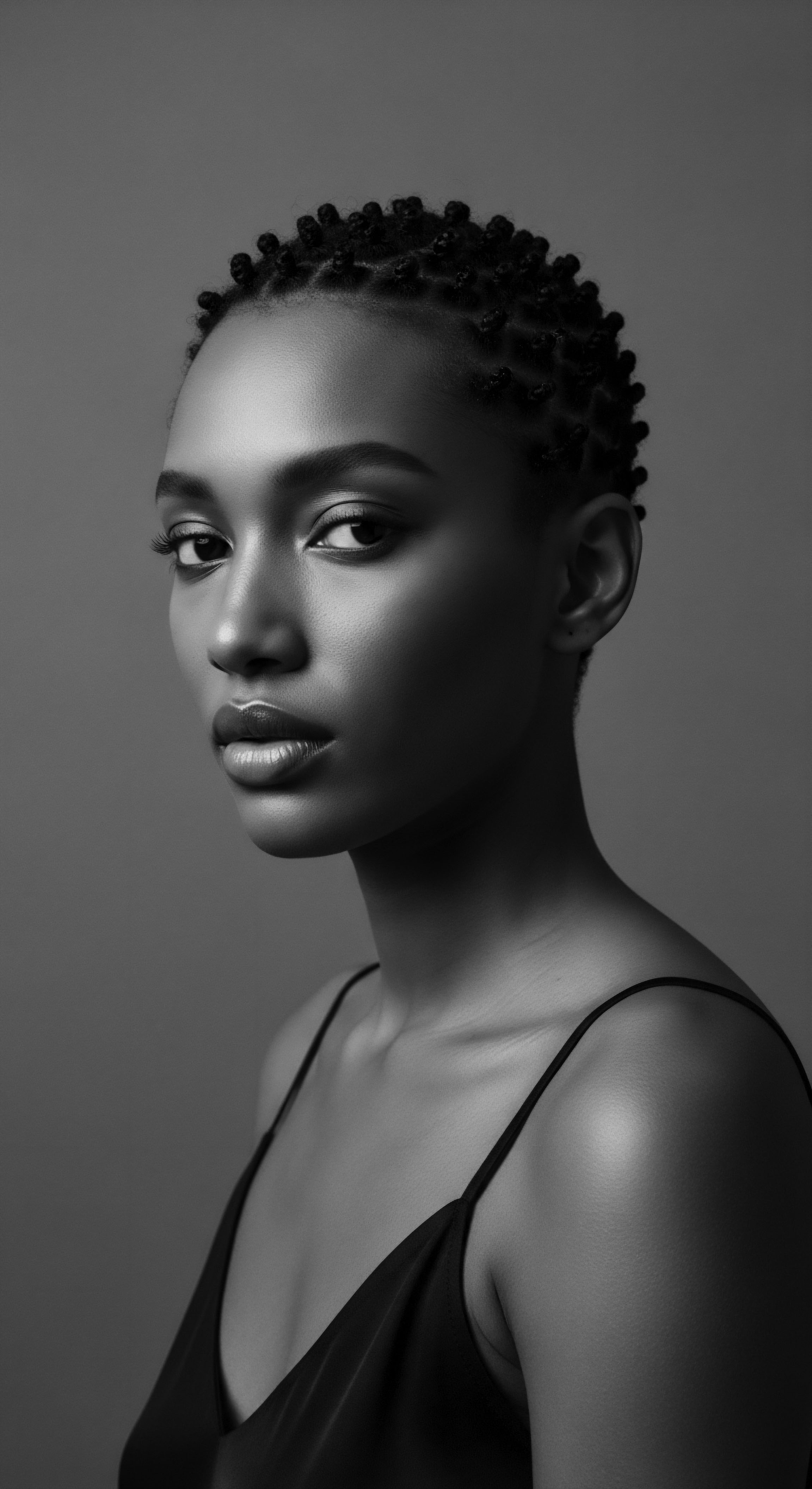
Melanin’s Connection to Hair Properties
Hair color, shaped by melanin, carries implications for hair health and behavior. Darker hair, with its higher eumelanin content, generally exhibits greater resistance to UV-induced degradation. This is not merely an aesthetic distinction; it represents a biological adaptation, a natural resilience against environmental challenges. The structure of hair with more eumelanin, often found in textured hair, tends to be denser and more robust, although it can also be more prone to dryness due to its unique architectural patterns.
The way melanin influences the hair’s interaction with light, moisture, and even chemical treatments offers a profound insight into its complex biological function. Understanding this basic meaning of hair melanin opens the door to appreciating the deeper cultural and historical narratives woven into every strand, particularly within textured hair heritage.
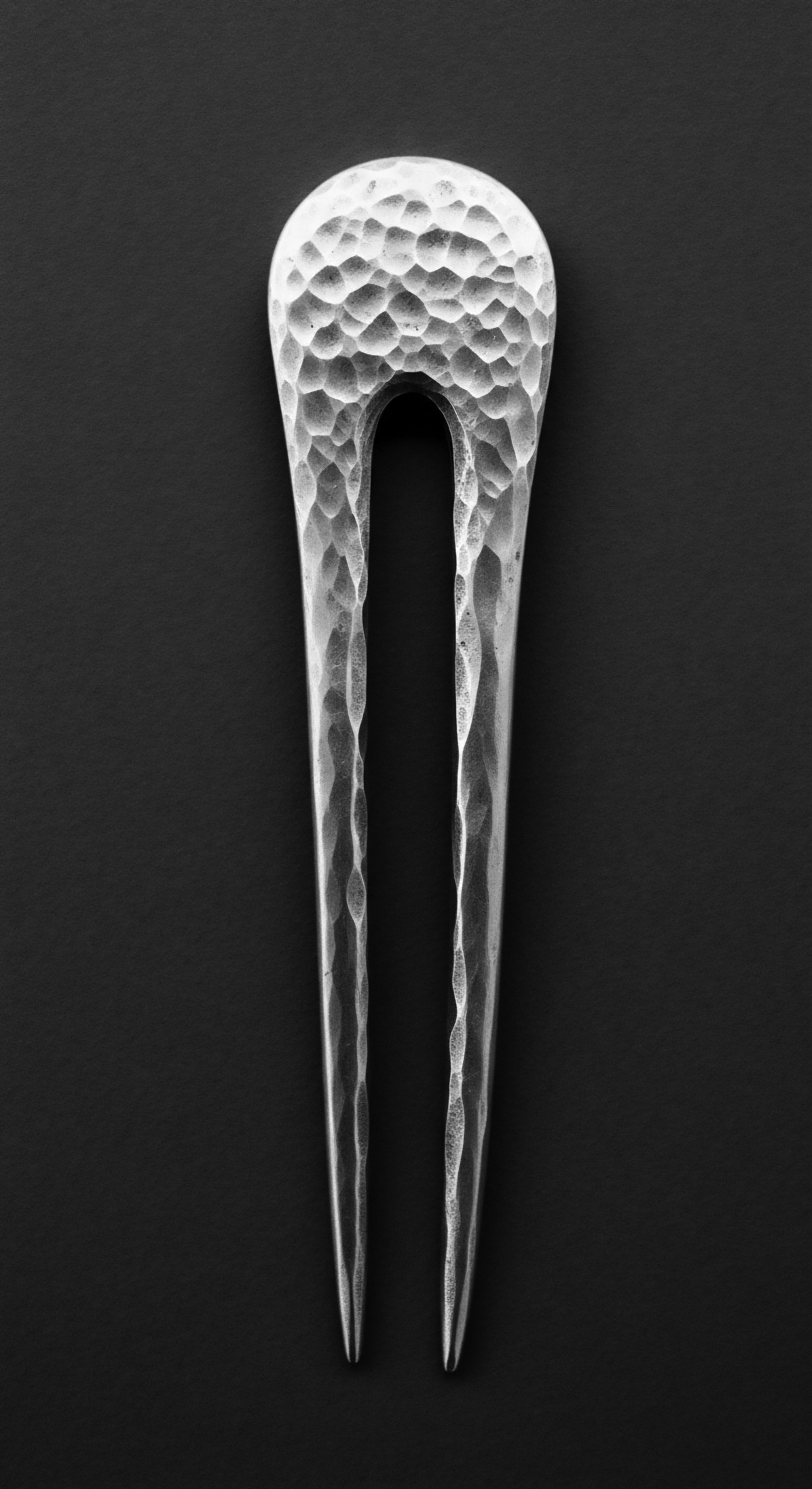
Intermediate
Moving beyond the foundational understanding, the intermediate exploration of hair melanin delves into its more intricate biological roles and its initial connections to the diverse tapestry of human hair, especially within the context of textured hair. Hair melanin, a biopolymer synthesized through a complex process known as Melanogenesis, represents more than just a pigment; it embodies a profound evolutionary adaptation. This intricate chemical pathway, starting with the amino acid tyrosine, culminates in the formation of eumelanin and pheomelanin, each contributing distinct qualities to the hair.
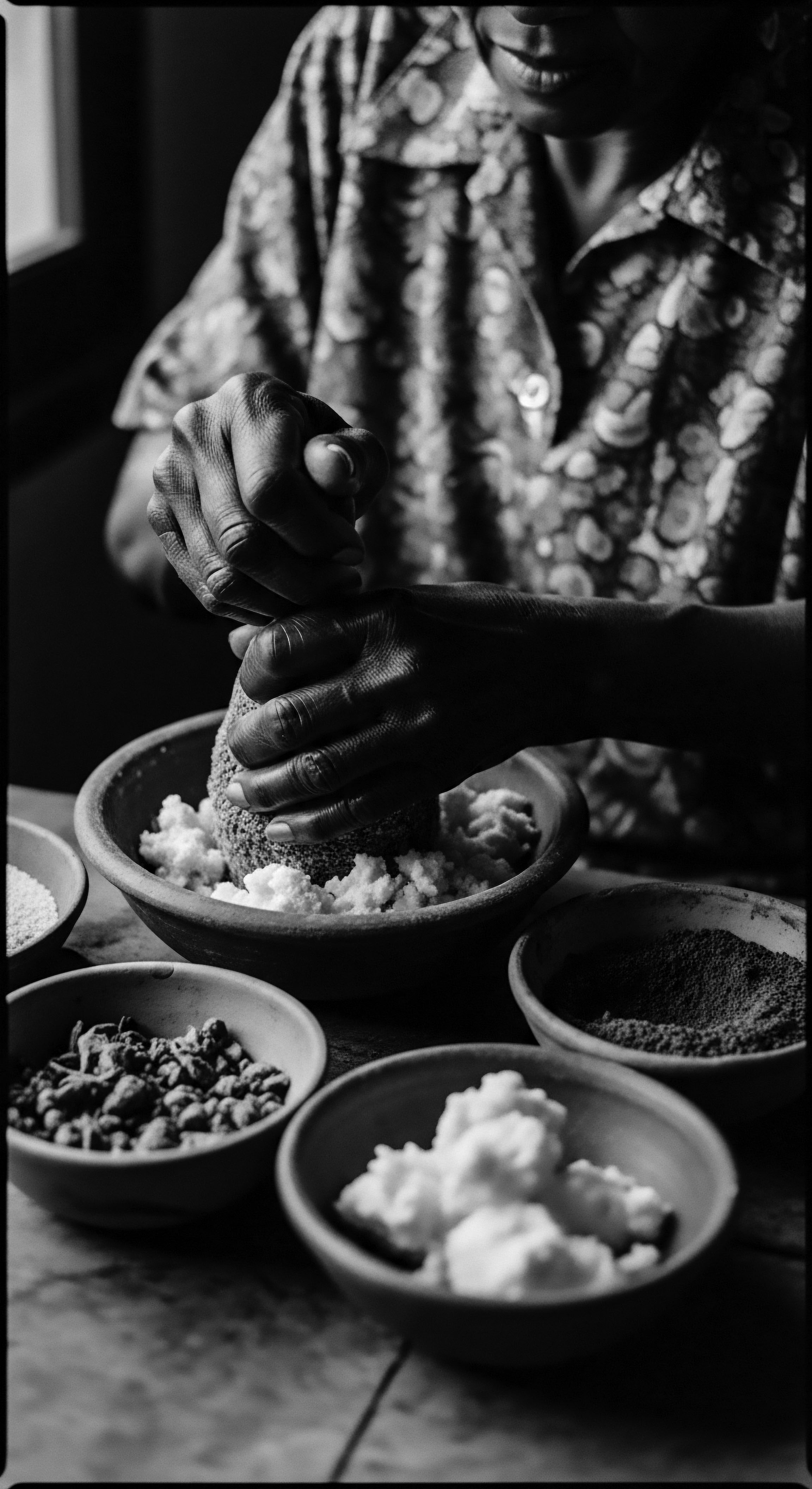
The Melanin Dichotomy ❉ Eumelanin and Pheomelanin
The two primary forms of melanin, eumelanin and pheomelanin, exhibit differing chemical structures and protective capacities. Eumelanin, the darker pigment, provides superior photoprotection by efficiently absorbing and dissipating ultraviolet radiation as heat. This characteristic lends a natural resilience to hair rich in eumelanin, often seen in darker, more textured hair types.
Pheomelanin, with its reddish-yellow hues, offers less robust UV protection and can even contribute to oxidative stress when exposed to sunlight. The precise balance of these pigments within an individual’s hair shaft dictates not only the color but also its inherent vulnerability or fortitude against environmental elements.
The evolutionary significance of this melanin distribution is particularly compelling. Populations originating in regions with high solar intensity often exhibit higher concentrations of eumelanin in their hair and skin, a biological safeguard against the sun’s harsh rays. This natural shielding mechanism speaks volumes about the deep ancestral wisdom encoded within our very biology, a silent testament to the environments our forebears navigated.
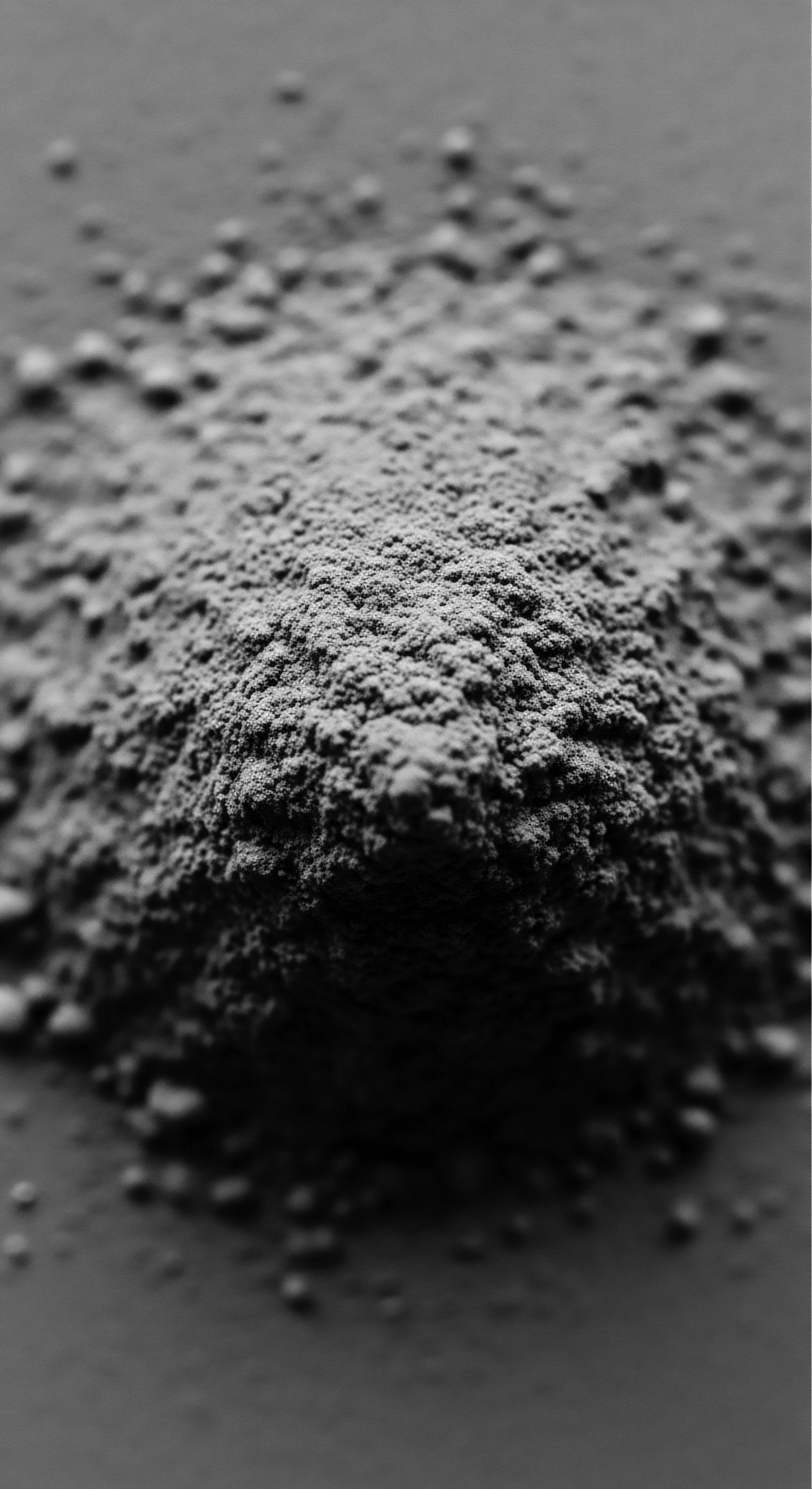
Melanin’s Influence on Hair Structure and Porosity
Beyond color, hair melanin influences the very architecture and behavior of the hair strand. Hair with higher concentrations of eumelanin, typically associated with darker hues and textured patterns, often emerges from hair follicles with flatter, more elliptical shapes. This unique follicular geometry contributes to the distinctive curl and coil patterns characteristic of textured hair. The distribution and morphology of melanosomes within the hair cortex also play a role in defining hair texture and strength.
Textured hair, rich in eumelanin, frequently possesses a denser structure, yet it can also exhibit higher porosity. Porosity describes the hair’s ability to absorb and retain moisture. While high porosity can allow products to penetrate easily, it also means moisture can escape with equal swiftness, leading to dryness. This nuanced relationship between melanin content, structural integrity, and moisture dynamics highlights why culturally attuned hair care practices have always prioritized hydration and protection for textured hair.
The subtle interplay of eumelanin and pheomelanin within each strand whispers tales of ancient adaptations, shaping hair’s color and its very interaction with the world.
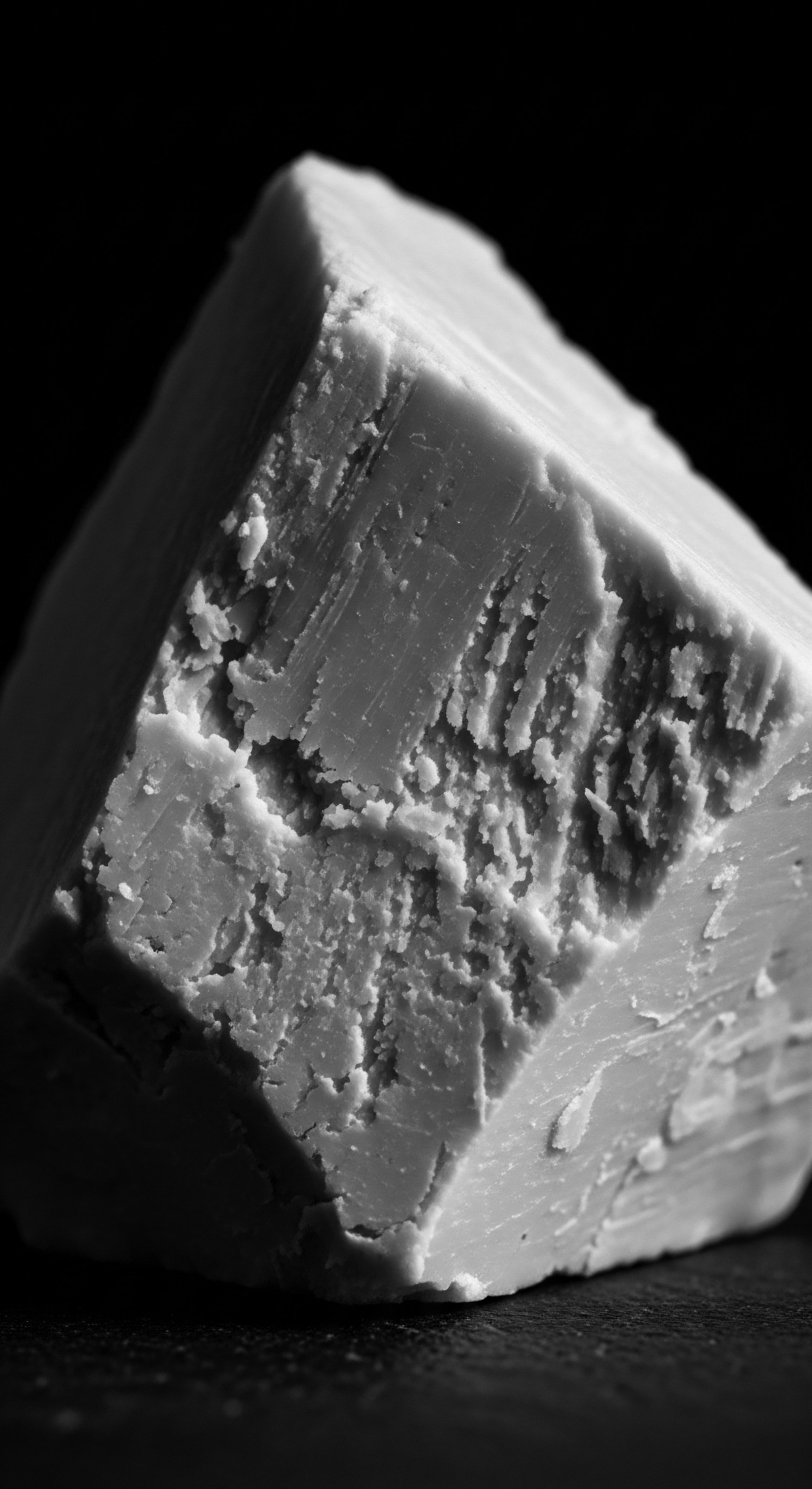
Oxidative Stress and Melanin’s Decline
The vitality of hair melanin is not immutable. Over time, environmental factors and the natural aging process can impact melanin production. Oxidative stress, an imbalance between reactive oxygen species and the body’s antioxidant defenses, significantly contributes to the decline of melanin and the onset of graying hair. Melanocytes, the cells responsible for melanin synthesis, are particularly susceptible to this stress.
This natural progression, while universal, holds a particular cultural significance. In many traditions, the appearance of gray hairs is seen as a sign of wisdom, experience, and the veneration of elders, weaving the biological reality of melanin’s reduction into a cherished cultural narrative. The understanding of melanin at this intermediate level allows for a deeper appreciation of both its scientific complexities and its profound cultural resonance, especially within communities that honor the journey of hair through life.
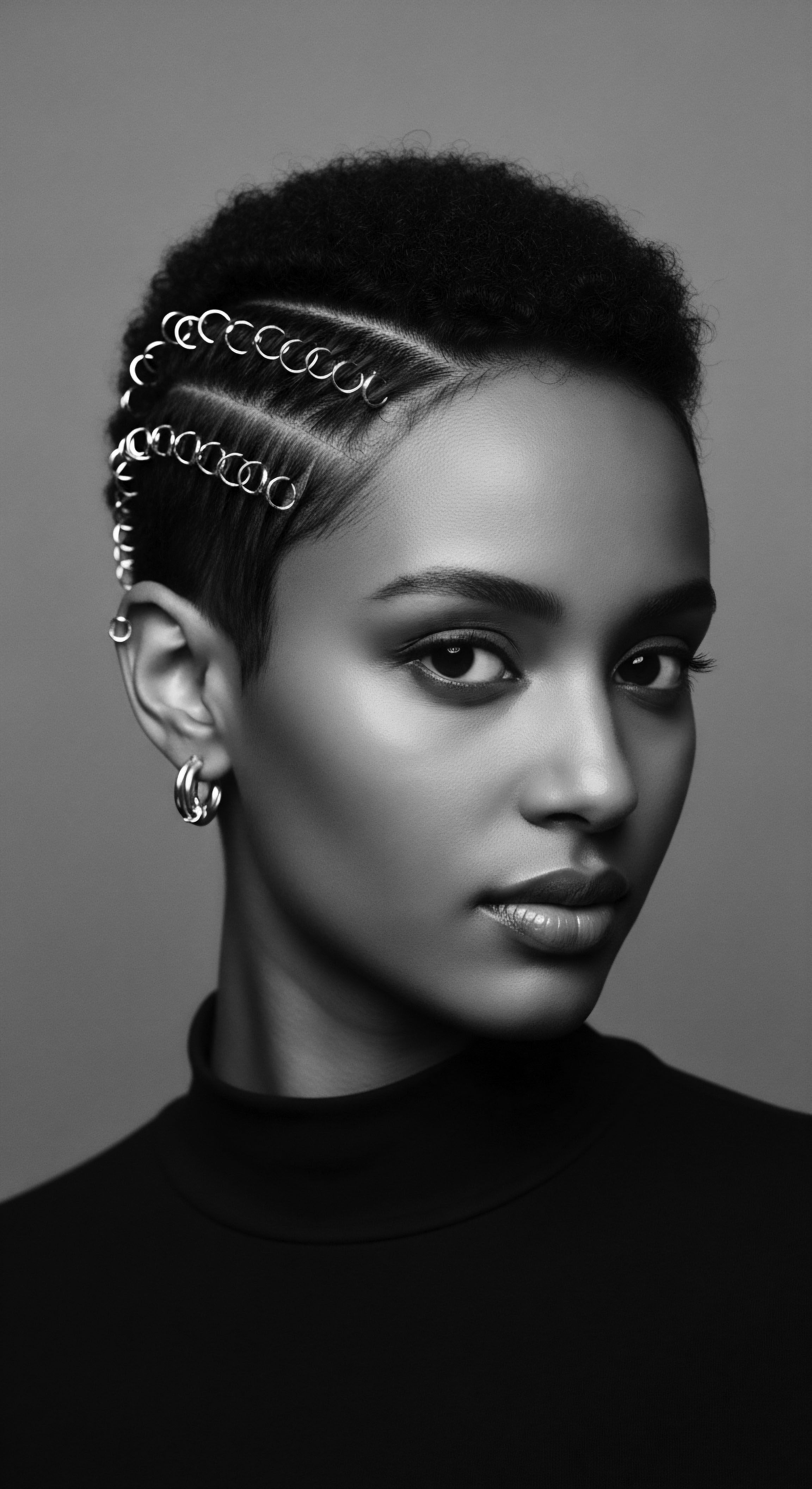
Academic
The academic elucidation of Hair Melanin extends beyond its basic chromatic function, positioning it as a sophisticated biopolymeric system with profound implications for cellular photoprotection, structural integrity, and the phenotypic expression of human diversity. Its meaning is rooted in a complex biochemical pathway, melanogenesis, which occurs within specialized organelles, melanosomes, residing in follicular melanocytes. This process, governed by a multitude of genetic and environmental factors, orchestrates the production of two primary forms ❉ the dark, photoprotective Eumelanin and the lighter, less protective Pheomelanin. The precise quantitative ratio and spatial distribution of these melanin types within the hair cortex delineate not only the vast spectrum of human hair colors but also influence the hair fiber’s biophysical properties, including its resilience to environmental stressors, mechanical strength, and moisture dynamics.
From an academic vantage, Hair Melanin functions as an endogenous photoprotectant, capable of absorbing and dissipating ultraviolet (UV) radiation, thereby mitigating photo-oxidative damage to keratin proteins and lipids within the hair shaft. This protective capacity is disproportionately attributed to eumelanin, which exhibits superior light absorption efficiency and a more stable chemical structure compared to pheomelanin. The differential photostability of these melanin types elucidates why darker, eumelanin-rich hair often demonstrates greater inherent resistance to sun-induced fading and structural degradation, a critical adaptive trait for populations historically exposed to high solar irradiance.
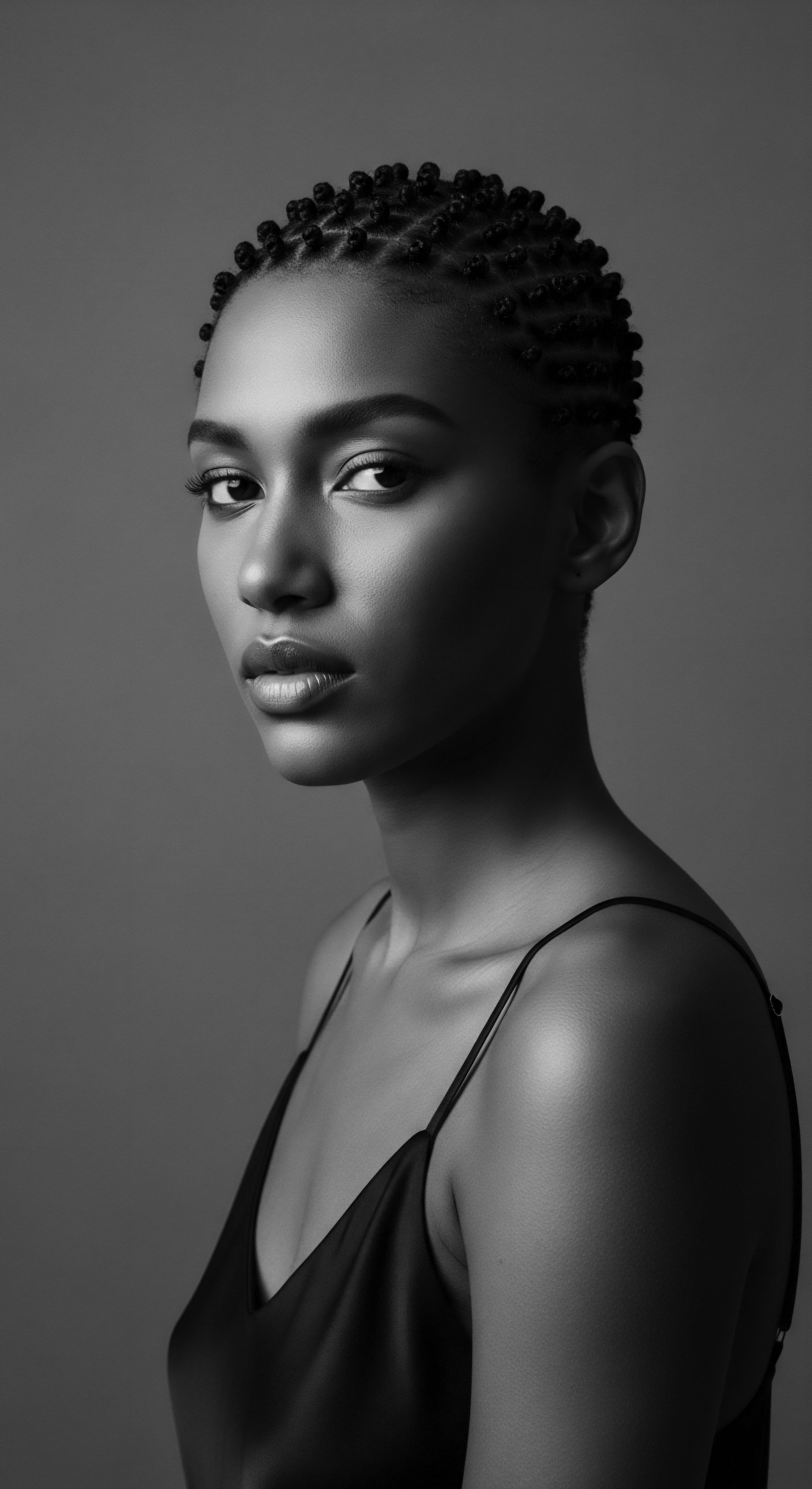
Evolutionary Adaptive Significance and Ancestral Wisdom
The prevalence of highly melanized, textured hair across populations of African descent represents a compelling instance of biological adaptation, a deep-seated evolutionary response to environmental pressures. Ancestral communities inhabiting equatorial regions, characterized by intense solar radiation, developed hair rich in eumelanin and possessing tightly coiled structures. This morphology, combined with the melanin content, served as an optimal protective canopy for the scalp, shielding it from direct UV exposure while simultaneously facilitating thermoregulation by trapping a layer of air close to the skin. The very existence of these hair characteristics is a testament to the long-term interplay between human biology and the environment, a narrative of survival etched into our genetic code.
Ancient practices, often dismissed as mere folk remedies, implicitly acknowledged this intrinsic protective quality of melanin-rich hair. Consider the traditional hair care rituals of the Himba people of Namibia. For centuries, Himba women have adorned their hair with a paste known as Otjize, a mixture of ochre, butterfat, and aromatic herbs. This practice, far from being solely aesthetic, served multiple purposes ❉ the red ochre provided additional UV protection, the butterfat offered deep conditioning and moisture retention for melanin-rich strands, and the collective application fostered community bonds.
While the Himba may not have articulated their understanding in terms of “eumelanin” or “UV absorption,” their sustained practices reveal an embodied, generational knowledge of how to care for and protect highly melanated, textured hair in challenging climates. This case study powerfully demonstrates how ancestral wisdom, passed down through generations, intuitively aligned with the underlying biological principles of hair melanin’s protective role.
Hair melanin, especially in textured hair, is a living archive of human adaptation, silently narrating tales of survival and resilience against the sun’s ancient glare.
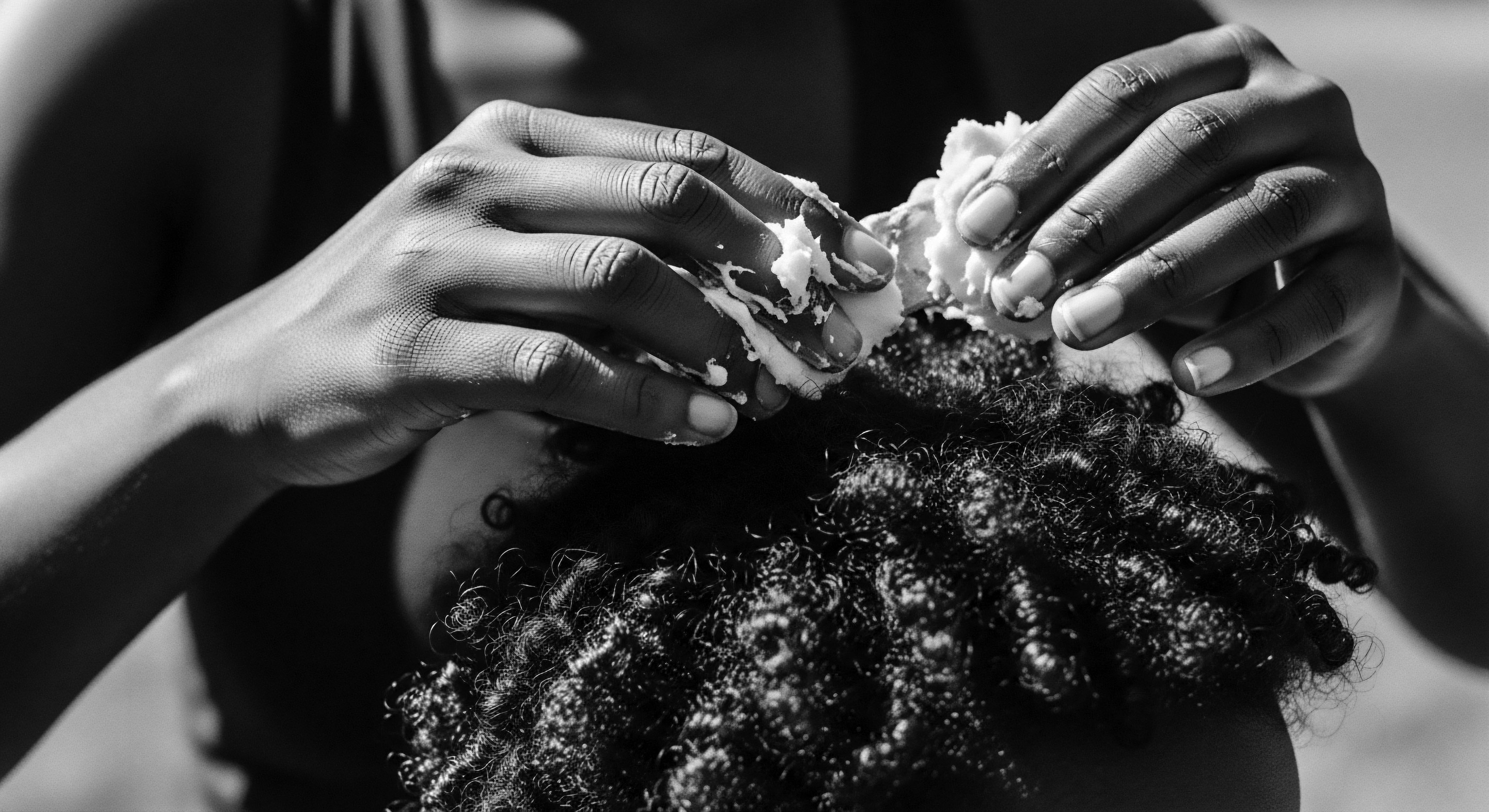
Melanin’s Role in Structural Integrity and Oxidative Resilience
Beyond pigmentation and UV defense, melanin contributes to the overall structural integrity of the hair fiber. Eumelanin, in particular, has been implicated in providing mechanical strength and resistance to various forms of degradation. The distribution of melanosomes within the hair cortex, often more densely packed in the outer periphery of dark hair, can influence the hair’s tensile properties.
However, the synthesis of melanin itself is an oxidative process, generating reactive oxygen species (ROS) within the melanocytes. This inherent oxidative burden necessitates robust antioxidant defense mechanisms within the hair follicle to maintain melanocyte viability and sustained melanin production.
Dysregulation of these antioxidant systems, particularly with advancing age, leads to an accumulation of ROS, contributing to melanocyte dysfunction and the progressive loss of pigmentation, manifesting as hair graying. This phenomenon, often termed the “free radical theory of graying,” underscores the delicate balance required for sustained melanin synthesis. The unique structural characteristics of textured hair, including its elliptical cross-section and numerous curl points, also make it more susceptible to mechanical stress and breakage. Consequently, care practices that support antioxidant health and reinforce hair strength become paramount for preserving the vitality of melanin-rich, textured strands.
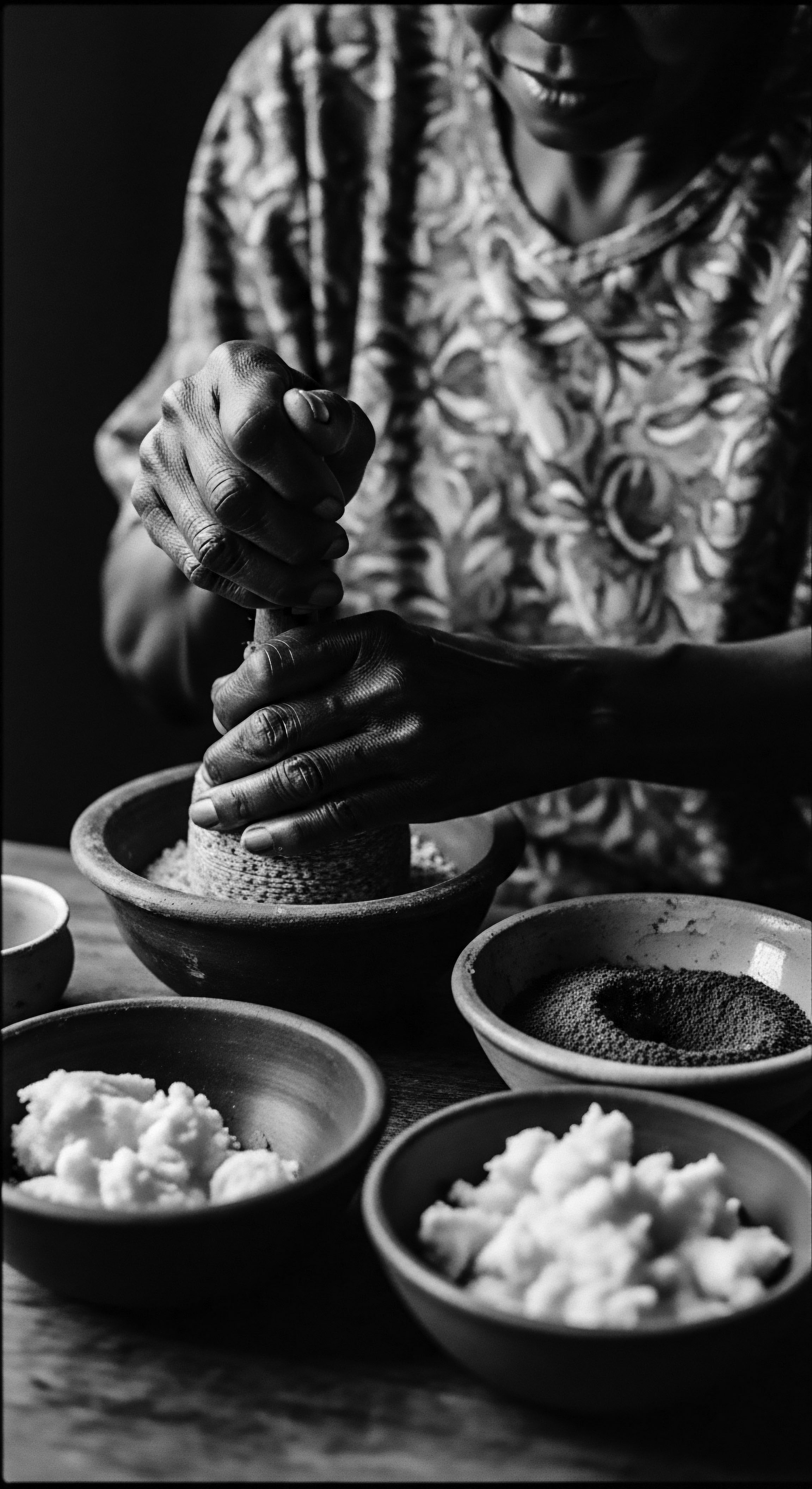
Melanin’s Influence on Hair Porosity and Moisture Dynamics
The intricate relationship between hair melanin and porosity holds significant weight for textured hair care. Hair with a higher concentration of eumelanin, commonly found in coily and kinky textures, tends to be more porous. This increased porosity implies a cuticle layer that may be more open or raised, allowing for both rapid absorption and rapid loss of moisture. This characteristic often leads to a predisposition for dryness and breakage in melanin-rich textured hair.
Understanding this aspect of melanin’s influence provides a scientific grounding for traditional hair care practices that prioritize deep conditioning, sealing moisture, and protective styling. These ancestral methods, such as regular oiling, braiding, and twisting, were not merely cosmetic; they were deeply practical strategies to counteract the inherent moisture challenges of highly melanated, textured hair. They represent a sophisticated, empirically derived knowledge system that supported hair health long before the advent of modern hair science.
| Traditional Practice/Ingredient Shea Butter (West Africa) |
| Ancestral Understanding (Heritage) Nourishes, softens, protects hair from sun and harsh elements. |
| Modern Scientific Link to Melanin/Hair Health Rich in fatty acids and vitamins, provides emollients that seal moisture into porous, melanin-rich strands, offering UV protection. |
| Traditional Practice/Ingredient Chebe Powder (Chad) |
| Ancestral Understanding (Heritage) Promotes length retention, strengthens hair, reduces breakage. |
| Modern Scientific Link to Melanin/Hair Health Herbal mixture believed to strengthen hair shaft, potentially reducing mechanical stress on melanin-rich coils, thus preserving length. |
| Traditional Practice/Ingredient Hot Oil Treatments (Various African/Diasporic) |
| Ancestral Understanding (Heritage) Adds shine, prevents dryness, stimulates scalp. |
| Modern Scientific Link to Melanin/Hair Health Oils like castor or coconut penetrate the hair shaft, reinforcing the lipid layer, reducing protein loss, and supporting the integrity of melanin-containing cortex. |
| Traditional Practice/Ingredient Protective Styling (Braids, Twists, Cornrows) |
| Ancestral Understanding (Heritage) Safeguards hair, signifies identity, reduces manipulation. |
| Modern Scientific Link to Melanin/Hair Health Minimizes exposure to environmental damage (UV, pollution) and mechanical stress, preserving the melanin and structural proteins within the hair. |
| Traditional Practice/Ingredient These practices, honed over centuries, reveal an intuitive understanding of melanin-rich hair's needs, bridging ancestral wisdom with contemporary scientific insights. |
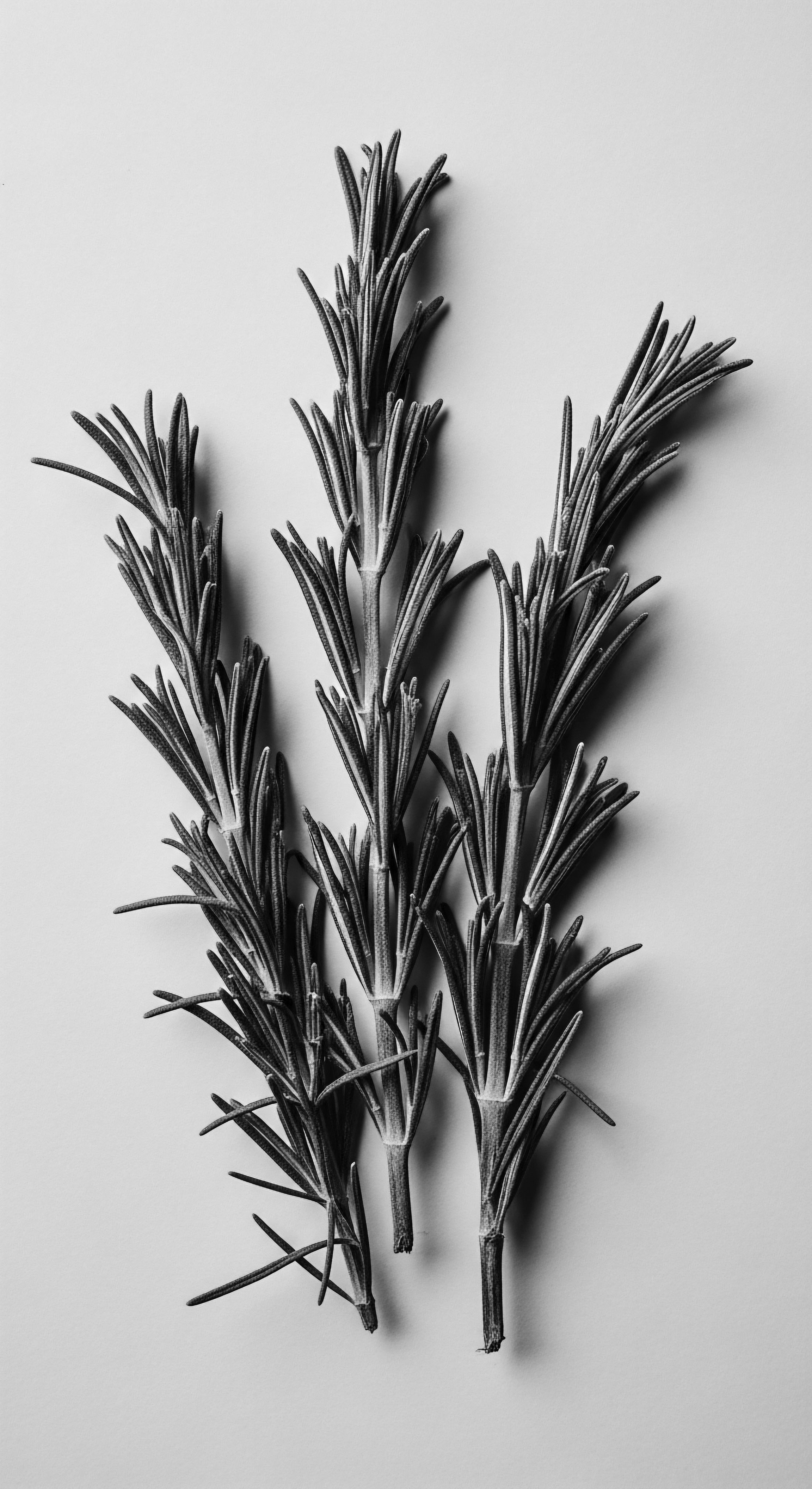
The Socio-Cultural Weight of Hair Melanin
The academic discussion of hair melanin cannot exist in isolation from its profound socio-cultural context, particularly within Black and mixed-race communities. Hair color, intrinsically tied to melanin content, has historically served as a marker of identity, status, and resistance. During periods of oppression, such as the transatlantic slave trade, the forced shaving or alteration of hair was a deliberate act of dehumanization, aimed at severing cultural ties and erasing identity. Yet, even under such duress, hair, and by extension its melanin-derived qualities, became a covert medium of communication and a symbol of enduring heritage.
Oral histories recount instances where enslaved people braided intricate patterns into their hair, secretly encoding maps to freedom. These styles, inherently relying on the texture and resilience of melanin-rich hair, became acts of profound defiance.
The 20th century witnessed the emergence of the Natural Hair Movement, a powerful reclamation of identity that celebrated the inherent beauty of textured, melanin-rich hair. This movement challenged Eurocentric beauty standards that had long devalued natural hair textures, advocating for self-acceptance and cultural pride. The rejection of chemical relaxers and the embrace of afros, braids, and twists were not merely fashion statements; they represented a profound political and social assertion of selfhood, rooted in the celebration of one’s natural, melanin-defined heritage. This historical trajectory demonstrates that hair melanin, in its very presence and properties, has been a constant, albeit silent, participant in the ongoing dialogue of identity, resistance, and cultural affirmation for Black and mixed-race individuals.
Scholarly work on hair diversity, while sometimes marred by historical prejudices, increasingly seeks to understand the evolutionary roots of hair characteristics without racializing them. Anthropologists recognize hair’s significance beyond mere ornament, acknowledging its role in interfacing with the environment and signaling identity.
- Eumelanin’s Protective Role ❉ Higher concentrations of eumelanin, common in textured hair, provide enhanced protection against harmful UV radiation.
- Melanosome Morphology ❉ The size and shape of melanosomes, the cellular structures storing melanin, vary across hair types and contribute to the diverse textures and colors observed.
- Genetic Predisposition to Graying ❉ While a natural aging process, the timing and extent of hair graying are influenced by genetic factors affecting melanocyte stem cell function.
The academic interpretation of hair melanin extends to its functional implications in modern hair care. The unique characteristics of melanin-rich textured hair, such as its susceptibility to dryness and breakage, necessitate targeted formulations that prioritize hydration, strength, and scalp health. Products designed with an understanding of melanin’s influence on hair structure can support the hair’s natural vitality, honoring its ancestral resilience. This approach moves beyond superficial aesthetics, connecting scientific understanding with a profound respect for cultural heritage and the specific needs of textured hair.
- Moisture Retention Strategies ❉ Due to the porous nature of melanin-rich textured hair, effective care routines prioritize methods that seal moisture into the hair shaft.
- Protein Balance ❉ Maintaining the delicate balance of protein and moisture is crucial for strengthening melanin-rich strands, which are prone to breakage.
- Scalp Health ❉ A healthy scalp environment directly supports the melanocytes and sustained melanin production, contributing to overall hair vitality.
The ongoing research into melanin synthesis and its degradation pathways offers avenues for innovative interventions, potentially addressing concerns like premature graying or environmental damage. However, such advancements must always be considered within a framework that respects the historical and cultural significance of hair melanin, particularly for communities whose hair has been a canvas for identity, resistance, and celebration.
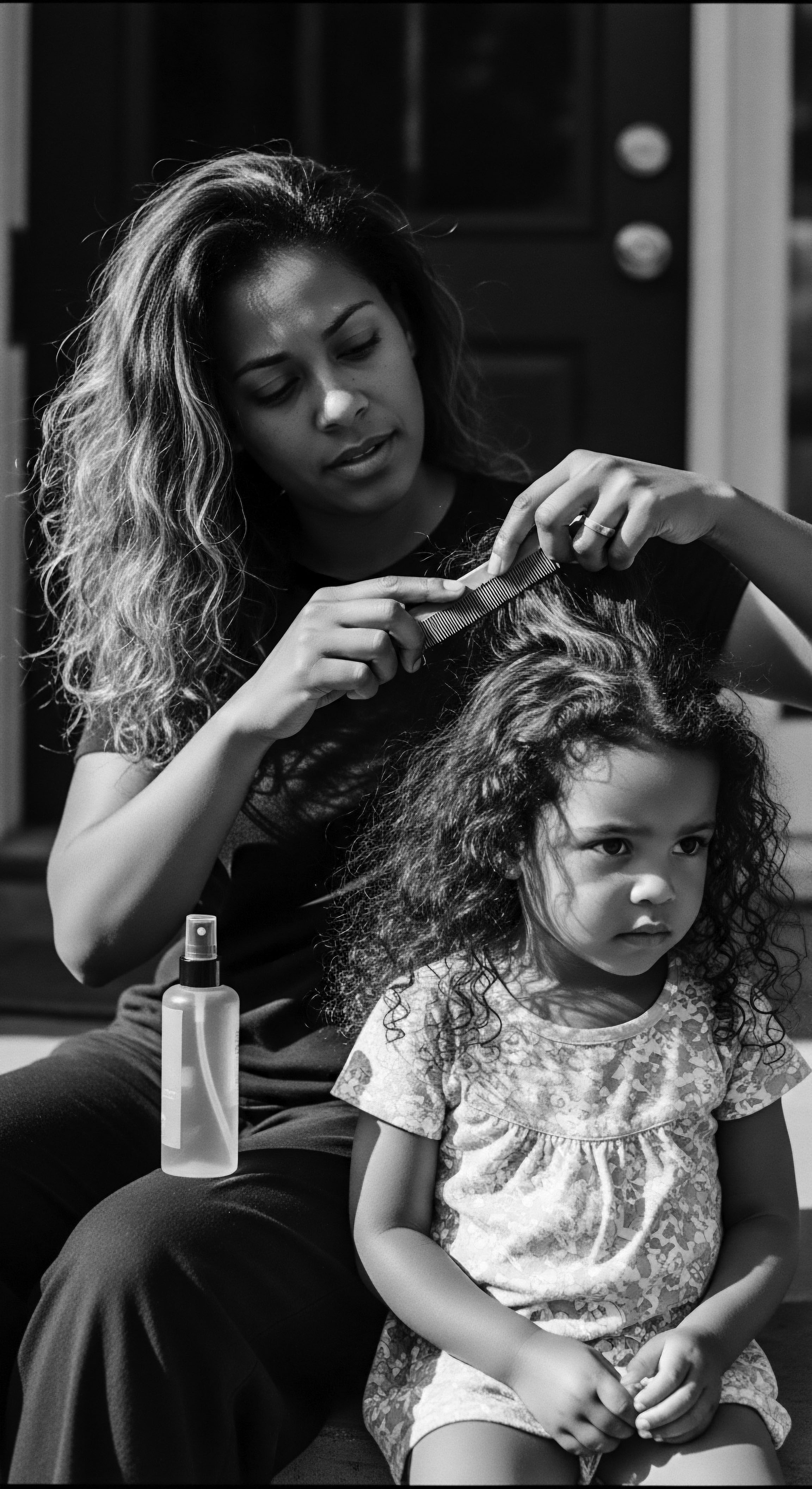
Reflection on the Heritage of Hair Melanin
The journey through hair melanin, from its elemental biology to its deep cultural resonance, reveals a truth far richer than mere pigment. It is a profound meditation on the ‘Soul of a Strand,’ a testament to the enduring heritage woven into every coil, kink, and wave of textured hair. Hair melanin, in its very presence, carries the echoes of ancient suns and ancestral resilience, a silent chronicle of human adaptation and survival across continents. The profound significance of this natural coloring agent extends beyond the visual, reaching into the core of identity and community.
Each strand, imbued with its unique concentration of eumelanin and pheomelanin, tells a story of lineage, of environments shaped by the sun, and of practices honed over millennia. The robust, protective qualities of melanin-rich hair are not a coincidence; they are a legacy, a biological inheritance that allowed our ancestors to thrive in diverse climates. This inherent strength was understood and honored through traditional care rituals, through communal braiding sessions that reinforced both hair and social bonds, and through styles that spoke volumes without uttering a single word.
The ongoing dialogue surrounding textured hair care, its challenges, and its triumphs, is inextricably linked to the legacy of hair melanin. It is a dialogue that acknowledges the historical attempts to erase and devalue natural hair, yet simultaneously celebrates the unwavering spirit of those who reclaimed their crowns. The modern movement towards embracing natural hair, recognizing its unique needs and inherent beauty, is a powerful continuation of this ancestral narrative. It is a commitment to honoring the wisdom embedded in every melanin-kissed curl, a dedication to nurturing what nature so perfectly crafted.
In Roothea’s living library, hair melanin is more than a scientific definition; it is a spiritual anchor, connecting us to the past, grounding us in the present, and inspiring a future where every strand is seen, valued, and celebrated for its inherent worth and its profound heritage. It reminds us that true wellness begins with understanding and cherishing the biological gifts passed down through generations, recognizing that our hair, in all its textured glory, is a sacred extension of our ancestral story.
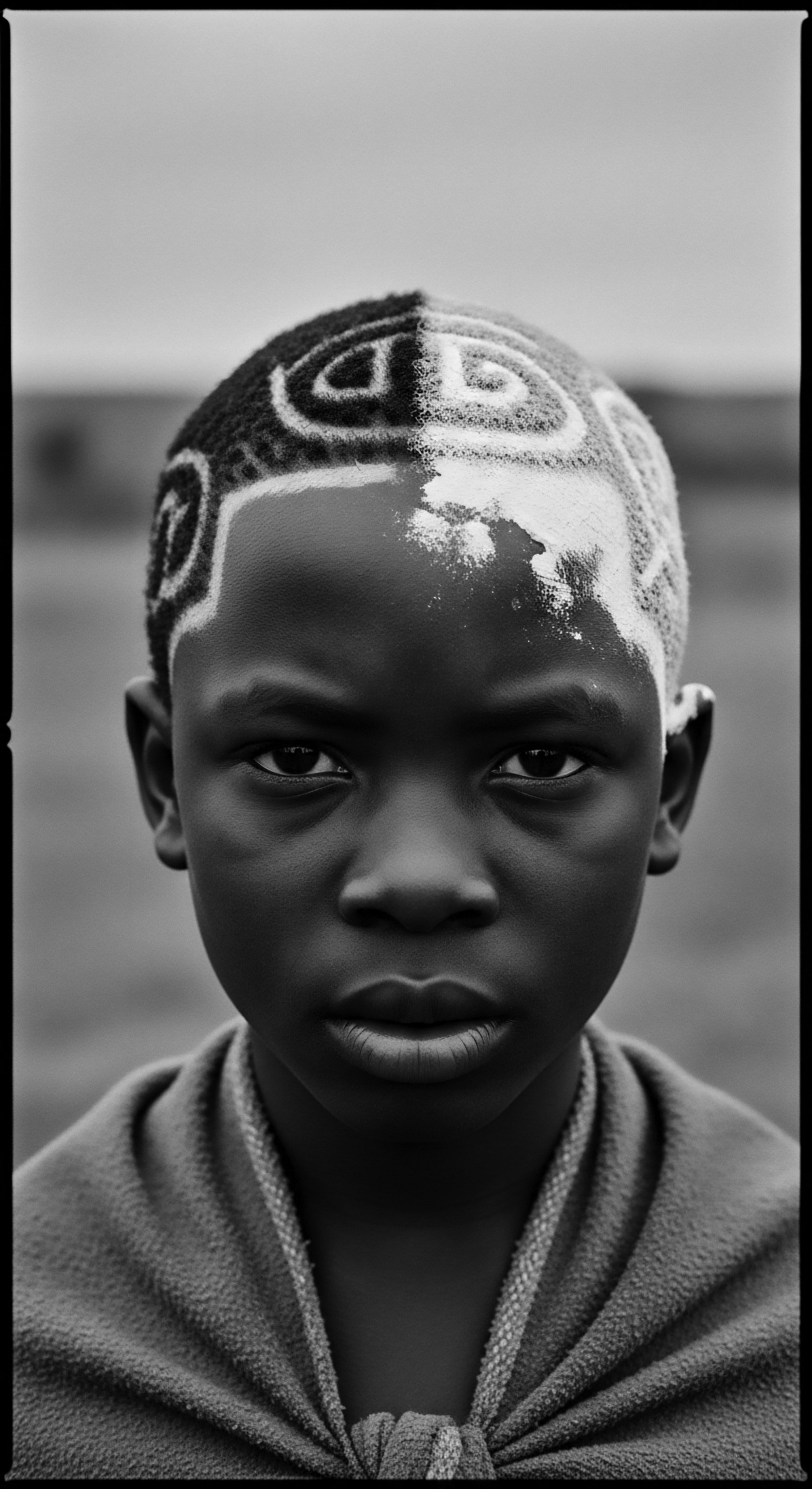
References
- 1. Cabos, J.F. & Clauderer, H. (2018). Hair, Roots of Life. Robert Laffont.
- 2. Al-Ghazzi, A. (2024). Herbal insights into melanin synthesis ❉ Enhancing hair health naturally. Journal of Dermatology and Cosmetology, 8(3), 1-8.
- 3. BLAM UK CIC. (2022). The history of Black Hair. BLAM UK CIC.
- 4. Arck, P. C. et al. (2006). Oxidative Stress in Ageing of Hair. Experimental Dermatology, 15(7), 499-507.
- 5. Queen’s Journal. (2025). History, identity, and community ❉ The significance of Black hair. The Queen’s Journal.
- 6. Noma Sana. (2024). The History of Straightening Afro and Textured Hair. Noma Sana.
- 7. Hoting, E. et al. (2003). Role of melanin and artificial hair color in preventing photo-oxidative damage to hair. Journal of Cosmetic Science, 54(2), 119-131.
- 8. Tyme. (2025). Melanin hair care shampoo ❉ What to buy and why it matters. Tyme.
- 9. NYSCC. (2021). Impact of Environmental Stressors on Hair. NYSCC.
- 10. Jo, S. J. & Paik, S. H. (2018). Three Streams for the Mechanism of Hair Graying. Annals of Dermatology, 30(3), 253-258.
- 11. Zhang, M. et al. (2022). Fuzhuan Brick Tea Boosts Melanogenesis and Prevents Hair Graying through Reduction of Oxidative Stress via NRF2-HO-1 Signaling. Molecules, 27(6), 1989.
- 12. Root Awakening Hair Spa. (2024). Textured Hair Care Through the Decades ❉ The 1940s – War, Work, and Waves. Root Awakening Hair Spa.
- 13. Galván, I. & Solano, F. (2012). Relationships between Hair Melanization, Glutathione Levels, and Senescence in Wild Boars. Physiological and Biochemical Zoology, 85(4), 369-378.
- 14. D’Acunzi, M. et al. (2024). Melanin for Photoprotection and Hair Coloration in the Emerging Era of Nanocosmetics. International Journal of Molecular Sciences, 25(10), 5862.
- 15. Goddard, N. (2020). Melanin for Hair ❉ What Role It Plays & How to Increase Production. Healthline.
- 16. BA Notes. (2023). The Diversity of Hair Characteristics Across Human Populations. BA Notes.
- 17. Nubian Skin. (n.d.). Melanin Magic Through Time. Nubian Skin.
- 18. Darkspark. (2023). The Complex History of Black Hair. Darkspark.
- 19. White, V. (2022). Celebrating the history and beauty of afro-textured hair. Issuu.
- 20. Childish Mane LLC. (2024). EMBRACING ROOTS ❉ The Resilience of African American Women Through Their Natural Hair. Childish Mane LLC.
- 21. Creative Support. (n.d.). The History of Black Hair. Creative Support.
- 22. African American Museum of Iowa. (n.d.). History of Hair. African American Museum of Iowa.
- 23. Consensus. (n.d.). What Is Melanin? Consensus ❉ AI Search Engine for Research.
- 24. Kayakalp Global. (2025). The Science Behind Melanin and Skin Health. Kayakalp Global.
- 25. MedlinePlus. (2022). Is hair color determined by genetics? MedlinePlus.
- 26. The Trichological Society. (n.d.). HAIR PIGMENTATION CHEMISTRY. The Trichological Society.
- 27. Seo, H. (2022). Untangling Race From Hair. Sapiens.org.
- 28. Reddit. (2021). No raw oils and butters vs. Traditional African hair care? r/Naturalhair.
- 29. Odele Beauty. (2021). 6 Things Everyone Should Know About Black Hair History. Odele Beauty.
- 30. Sreerama, Y. N. et al. (2009). Photodegradation of Eumelanin and Pheomelanin and Its Pathophysiological Implications. Photochemistry and Photobiology, 85(3), 642-650.
- 31. Hwang, S. H. et al. (2020). Mimicking Natural Human Hair Pigmentation with Synthetic Melanin. ACS Central Science, 6(5), 688-695.
- 32. Kojima, T. et al. (2024). Melanin granules morphology and distribution in human black hair investigated by focused ion beam scanning electron microscopy ❉ Differences between Asian and Caucasian hair. Journal of Structural Biology, 216(3), 108088.
- 33. Camp, B. (2024). Hair Photobleaching ❉ Effects of Sun, Safety, and Reversal. Verywell Health.
- 34. Wikipedia. (n.d.). Melanin. Wikipedia.
- 35. Mistry, N. et al. (2023). The Genomic Variation in Textured Hair ❉ Implications in Developing a Holistic Hair Care Routine. Cosmetics, 10(4), 94.
- 36. Gethairo.com. (2025). Ancient Egyptian Hair. TikTok.
- 37. Hairy Truths. (n.d.). Let’s talk about hair – Melanin. Hairy Truths.
- 38. Sapiens. (2018). Hair Everywhere ❉ Anthropological Notes on the Long and Short of It. Sapiens.org.
- 39. Reddit. (2021). No raw oils and butters vs. Traditional African hair care? r/Naturalhair.
- 40. WestCollections. (n.d.). The Sociology of Hair ❉ Hair Symbolism Among College Students. Western Connecticut State University.
- 41. Arab News. (2012). The secret of ancient Egyptian beauty. Arab News.
- 42. ISW Journal. (2016). “The Bright-Haired Community” ❉ A Study of People with Bright-Colored Hair. ISW Journal.
- 43. Quora. (2018). Why can’t scientists conduct melanin dosage tests on Egyptian mummies to resolve the race controversy? Quora.
- 44. CurlMix. (2025). Hair Care Practices from the Diaspora ❉ A Look at Africa, America, and Europe. CurlMix.
